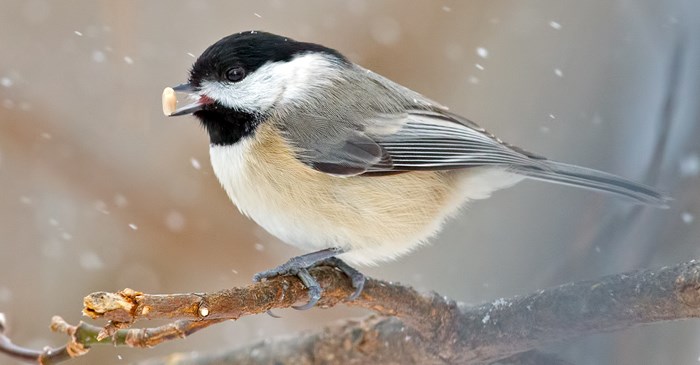Chickadees are charming, bold little birds that were probably among the earliest visitors to alight on your bird feeder the very first time you set it out. Even if you were to add a window feeder later on, other birds may hesitate to get close. Chances are good to excellent, however, that a chickadee will make the first move.
Even though they tend to follow a social hierarchy at the feeder, a chickadee won't linger long. What they will do is grab one seed and fly away with it. Perhaps they will set it on a branch and peck an opening into the husk. Or maybe the chickadee will hide it in the bark of a tree. In any case, a chickadee is capable of recalling thousands of hiding spots.
Found throughout much of the continental U.S., you'll see them living in forests, in parks and in residential neighborhoods as long as they have plenty of trees and shrubs to visit. These highly social birds don’t migrate in the winter, instead remaining year-round in their habitat. You'll also find them leading other species when they set out to forage for food.
Best known for a scolding “chickadee-dee-dee-dee” call and a high-whistled “fee bee” song, communication within the flock is quite complex. In fact, researchers believe the way chickadees communicate may share some characteristics with human speech. What is also interesting is that other bird species respond to chickadees, including nuthatches, woodpeckers, kinglets, creepers, warblers and vireo.
The many subspecies of chickadees
Several subspecies of chickadees can be found in North America, sharing many characteristics like round bodies and short necks and beaks — and they're almost universally characterized as cute. Wherever you may live or travel, keep an eye out for your neighborhood chickadee.
